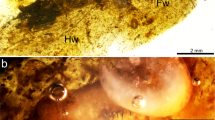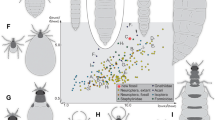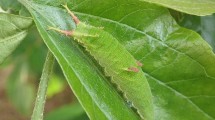Abstract
So far as is known, the majority of Reduviidæ are predators of other insects, and consequently their anterior legs in particular, with the median legs, are of utmost importance in assisting them to capture their prey, especially when it is an active insect. But, in spite of their predaceous habits, it is perhaps remarkable that few Reduviidæ, with the exception of the sub-family Emesinæ and the Old World genera, Irantha, Polydidus and Scipinia, possess anterior legs of the raptorial type.
This is a preview of subscription content, access via your institution
Access options
Subscribe to this journal
Receive 51 print issues and online access
$199.00 per year
only $3.90 per issue
Buy this article
- Purchase on Springer Link
- Instant access to full article PDF
Prices may be subject to local taxes which are calculated during checkout
Similar content being viewed by others
References
"The Climbing Organ of an Insect Rhodnius prolixus (Hemiptera, Reduviidæ)", Proc. Roy. Soc., B, 111 (1932).
Author information
Authors and Affiliations
Rights and permissions
About this article
Cite this article
MILLER, N. Function of the 'Fossula spongiosa' or Spongy Furrow in Reduviidæ (Rhynchota). Nature 141, 749–750 (1938). https://doi.org/10.1038/141749b0
Published:
Issue Date:
DOI: https://doi.org/10.1038/141749b0
This article is cited by
-
The Fossula Spongiosa in Reduviidæ
Nature (1939)
-
‘Climbing Organs’ in Insects
Nature (1938)
Comments
By submitting a comment you agree to abide by our Terms and Community Guidelines. If you find something abusive or that does not comply with our terms or guidelines please flag it as inappropriate.



